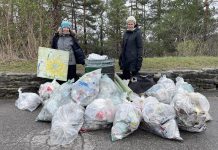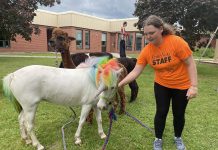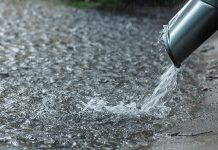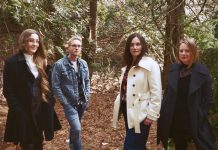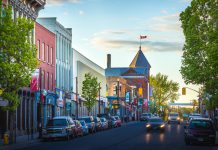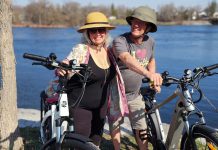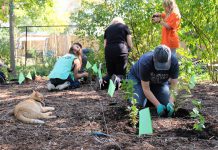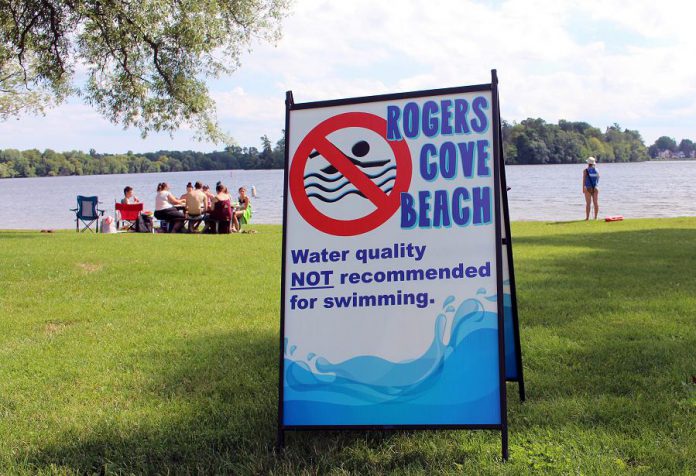
Over the last two weeks, to the disappointment of many area residents and visitors, some local beaches were posted as unsafe in Peterborough, Douro, and Norwood, and at Squirrel Creek.
With this lovely warm weather, many Canadians’ first impulse is to go directly to the beach with sunscreen, hat, and towel in hand.
However, as Peterborough area residents may have noticed, our urban beaches, notably Rogers Cove and Beavermead Park, are sometimes considered unsafe for swimming due to high bacteria levels.
Why do we see so many beach closures and who decides when it is unsafe to swim? Peterborough Public Health monitors the water at public beaches for bacteria levels, notably Escherichia coli, or E. coli for short.
“E. coli is a bacteria that normally lives in the intestines of healthy people and animals,” explains Public Health Inspector Ganesh Vallamkonda. “It is released from the bodies of warm-blooded animals in their faeces, which can then contaminate the water.”
Inside the lower digestive tract, E. coli is a normal part of our bodies’ system, but this bacterium can cause us to become very sick, or can even be fatal if consumed in food or through drinking water.
“We test the beaches, and if bacteria counts exceed 100 E. coli per 100mL of water, then the beach is considered unsafe for recreational use,” adds Vallamkonda. “We inform the public and post the beaches as unsafe for swimming.”
The primary inputs of E. coli in the lakes and rivers in and around Peterborough are from the faeces of waterfowl, such as ducks and geese. In other areas, sources of E. coli may be from urban runoff, agriculture, faulty septic systems, or sewage treatment overflow.
When it rains, the rainwater flows over the landscape including surfaces such as lawns, rooftops, driveways, and roads. Any contaminants that might be present on these surfaces, such as animal poop like waterfowl faeces or dog waste, along with other contaminants such as lawn fertilizers and leaking oil and gas, are also transported with the rainwater into the nearest storm sewers. Rainwater along with these contaminants then directly enters our waterways, without being treated.
E. coli counts can also elevate when it is warmer outside.
“Bacteria will multiply more quickly in hotter temperatures,” Vallamkonda says — which is why we see unsafe swimming conditions during the hottest summer months.
Anyone can play a role in reducing E. coli (and other contaminants) in our waterways and beaches. Many human practices and behaviours can attract waterfowl, and especially Canada geese, whose waste around our shorelines can quickly run off into waterways and contribute to E. coli inputs, especially after a good rain.
Vallamkonda suggests that one way to avoid attracting geese to the shoreline is “by not feeding them”. It is also important to note that human foods are unhealthy for waterfowl, so you can help them out by letting them forage for their own natural food sources.
Additionally, if you live along the shorelines of the Otonabee River or Jackson Creek, you can reduce the number of Canada Geese on your property by ensuring you do not mow right up to the water’s edge. A mowed shoreline provides ideal habitat for Canada Geese, whose poop then contributes to E. coli in the water.
If you would like to reduce the number of geese on your property, try planting trees, shrubs, and wildflowers to make your shoreline unsuitable habitat for them, and thus reducing E. coli inputs into the waterway. GreenUP Ecology Park carries a number of great native shoreline plants, such as dogwoods, alders, and wildflowers that will help make your shoreline less attractive to Canada geese, and more attractive to you.
Another action you can take to protect waterways from E. coli contamination is to pick up after your pets; stoop and scoop after your dog does their business. Throw the bag into the garbage, or, to be even more environmentally conscious, throw the pet waste into an anaerobic digester, while throwing away the bag.
You may also consider installing a rain garden on your property. In 2015, the Township of Selwyn and Otonabee Conservation constructed a rain garden at the Lakefield Beach to protect water quality by filtering runoff from the parking area.
Rain gardens can be used to protect water quality even if you are not living directly on the beach. While debris such as cigarette butts, pet waste, and contaminants are washed into waterways (and to our beaches) when it rains, rain gardens interrupt the runoff and capture these pollutants in the soil. Once captured, microbes break down these pollutants, releasing cleaner water into streams and lakes.
For more information about rain gardens, visit www.greenup.on.ca/rain/ or check out the GreenUP Calendar of events for ongoing workshops and learning opportunities.
Otonabee Conservation also runs the local chapter of the Yellow Fish Road Program, which raises awareness about pollutants in our waterways by painting yellow fish near our storm drains. If you are a local teacher, interested parent, or Scout or Girl Guide leader, you can contact Otonabee Conservation to organize a Yellow Fish Road program.
Keep an eye out for signage at our local beaches before diving in! If you want to help improve the quality of our waterways, consider these actions that will benefit the community at large.
For more information about the monitoring that is conducted by Peterborough Public Health, and the results found at Peterborough-area beaches, visit www.peterboroughpublichealth.ca.
Editor’s note: kawarthaNOW also publishes a weekly beach report every Friday during the summer months with water quality testing results for the City and County of Peterborough as well as the City of Kawartha Lakes, Northumberland, and Haliburton.


